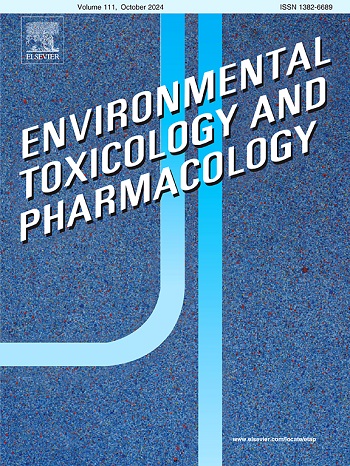Effects of anthropogenic stress on stingless bees Melipona mandacaia inhabiting urban and natural environments
IF 4.2
3区 环境科学与生态学
Q2 ENVIRONMENTAL SCIENCES
引用次数: 0
Abstract
Bees play a crucial role as pollinators, significantly contributing to ecosystem health. However, they face growing threats from human activities. This study uses biomarkers to evaluate the health status of Melipona mandacaia, a stingless bee native to the Caatinga biome, as indicators of anthropogenic stress. Bees were collected from the unique Caatinga biome, which had no recorded human pressure, and from an urban area with high human pressure. These bees were then analyzed for various biomarkers to assess the different levels of anthropogenic stress. The biomarkers included cholinesterases (ChE) to assess neurotoxicity, catalase (CAT) to measure antioxidant responses, glutathione S-transferases (GST) for detoxification pathways, and lipid peroxidation (LPO) as an indicator of oxidative stress. The results reveal that ChE inhibition may be associated with stress levels due to human activities showing an inhibition pattern with increased stress levels (up to 54.4 % inhibition), while the remaining biomarkers showed mixed responses across the different stress-level areas. In addition, the use of a principal component analysis (PCA) allowed a separation between the different groups and the weigh of the measured variables to each anthropogenic stress group. The integrated biomarker response (IBR) index was applied showing a clear distinction among groups. The obtained results could be partly explained by the beekeeping practices in some locations, which may have mitigated the effects of anthropogenic stressors to a certain degree, especially in HS. These findings underscore the importance of monitoring wild bee health in the Caatinga and demonstrate the value of a multifaceted biomarker approach for understanding the impacts of anthropogenic stressors on bee populations in varied environments and the effects of beekeeping.
求助全文
约1分钟内获得全文
求助全文
来源期刊
CiteScore
7.00
自引率
4.70%
发文量
185
审稿时长
34 days
期刊介绍:
Environmental Toxicology and Pharmacology publishes the results of studies concerning toxic and pharmacological effects of (human and veterinary) drugs and of environmental contaminants in animals and man.
Areas of special interest are: molecular mechanisms of toxicity, biotransformation and toxicokinetics (including toxicokinetic modelling), molecular, biochemical and physiological mechanisms explaining differences in sensitivity between species and individuals, the characterisation of pathophysiological models and mechanisms involved in the development of effects and the identification of biological markers that can be used to study exposure and effects in man and animals.
In addition to full length papers, short communications, full-length reviews and mini-reviews, Environmental Toxicology and Pharmacology will publish in depth assessments of special problem areas. The latter publications may exceed the length of a full length paper three to fourfold. A basic requirement is that the assessments are made under the auspices of international groups of leading experts in the fields concerned. The information examined may either consist of data that were already published, or of new data that were obtained within the framework of collaborative research programmes. Provision is also made for the acceptance of minireviews on (classes of) compounds, toxicities or mechanisms, debating recent advances in rapidly developing fields that fall within the scope of the journal.

 求助内容:
求助内容: 应助结果提醒方式:
应助结果提醒方式:


